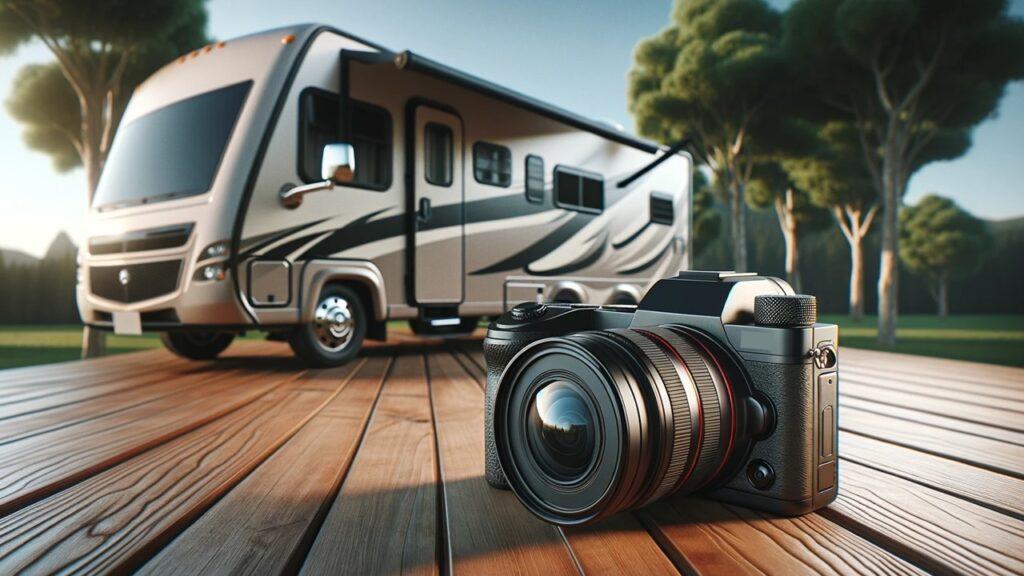
Maintaining the interior upholstery of your RV is essential for keeping it looking fresh, comfortable, and inviting. Whether you’re a full-time traveler or a weekend warrior, the condition of your RV’s interior plays a significant role in your overall experience. From selecting the right cleaning products to implementing preventative measures, there are several ways to keep your upholstery in top-notch condition. This comprehensive guide on “How To Maintain The Interior Upholstery of Your RV” will cover everything you need to know about maintaining your RV’s interior upholstery.
The Importance of RV Upholstery Maintenance
When you think about maintaining your RV, you might focus on the engine, tires, or exterior. However, the interior, particularly the upholstery, deserves just as much attention. Keeping your RV’s upholstery in good shape not only makes your space look clean and inviting but also extends its life. Over time, dirt, spills, and general wear and tear can degrade the fabrics, leading to stains, odors, and even structural damage. By maintaining your upholstery, you can avoid costly replacements and repairs, ensuring your RV remains a cozy home on wheels.
Choosing the Right Cleaning Products
The market is flooded with various cleaning products, but not all are suitable for your RV’s upholstery. Using the wrong cleaner can do more harm than good, potentially damaging fabrics or leaving residues that attract more dirt. For leather seats or RV mattress toppers, look for gentle, pH-balanced cleaners specifically designed for leather. Fabric upholstery, on the other hand, benefits from mild soap solutions or specialized fabric cleaners. Always check the manufacturer’s recommendations and test any new product on a small, hidden area first to ensure it doesn’t cause discoloration or damage.
Routine Cleaning and Vacuuming
Routine cleaning is the backbone of upholstery maintenance. Dust and dirt particles act like sandpaper, wearing down fibers each time someone sits down. By vacuuming regularly, at least once a week, you remove these abrasive particles. Use a vacuum cleaner with an upholstery attachment to get into the crevices and seams. Don’t forget to vacuum under and between cushions where crumbs and dust tend to accumulate. Consistent cleaning not only keeps your upholstery looking good but also contributes to a healthier living environment inside your RV.
Spot Cleaning Stains and Spills
Spills are inevitable, especially if you travel with kids or pets. The key to effective spot cleaning is prompt action. As soon as a spill occurs, blot (don’t rub) the area with a clean cloth to absorb as much of the liquid as possible. Rubbing can push the stain deeper into the fabric, making it harder to remove. For stubborn stains, use an appropriate upholstery cleaner. Apply the cleaner to a cloth rather than directly onto the fabric to avoid oversaturation. Follow up by blotting with a damp cloth to remove any cleaner residue, and then pat dry with a clean towel.
Deep Cleaning for Thorough Maintenance
Routine cleaning can only do so much. Periodic deep cleaning is essential for a truly clean and fresh interior. Depending on how often you use your RV, consider deep cleaning every six months to a year. Steam cleaners are a great option for deep cleaning upholstery. They use hot water and detergent to break down dirt and grime deep within the fibers, lifting them away without the need for harsh scrubbing. Be sure to follow the manufacturer’s instructions for your steam cleaner and allow the upholstery to dry thoroughly before using it again to prevent mold and mildew growth.
Protecting Upholstery from Sun Damage
Sunlight can be both a blessing and a curse for RV interiors. While natural light makes your space feel open and welcoming, UV rays can fade and weaken upholstery fabrics over time. To protect against sun damage, use window shades or curtains to block direct sunlight during peak hours. Another effective method is to apply a fabric protectant spray with UV inhibitors. This creates a barrier that helps prevent fading and deterioration caused by UV exposure. Taking these simple steps can keep your upholstery looking vibrant and new for longer.
Preventative Measures for Long-Term Care
Prevention is always better than cure, and this adage holds true for upholstery maintenance. Implementing a few preventative measures can save you a lot of hassle down the road. Use slipcovers on high-traffic areas and removable cushions to protect against spills and stains. Encourage your passengers to avoid eating and drinking on the upholstery, or at least be cautious when they do. Another smart move is to use protective sprays that create an invisible barrier, repelling liquids and preventing stains from setting in. These small steps can significantly prolong the life of your RV’s interior.
Dealing with Odors
Odors can quickly make your RV feel less like a home and more like a musty old vehicle. Upholstery, being porous, can absorb smells from food, pets, and even the environment. To combat this, sprinkle baking soda on the upholstery and let it sit for a few hours before vacuuming it up. Baking soda is a natural deodorizer that neutralizes odors rather than masking them. For a more thorough solution, consider using an upholstery cleaner with a built-in deodorizer. Additionally, keeping an air purifier in your RV can help maintain air quality and reduce lingering smells.
Caring for Different Types of Upholstery
Not all upholstery is created equal, and each type requires specific care to maintain its best condition. Fabric upholstery is common in many RVs and can usually be cleaned with mild soap and water. Be careful not to over-wet the fabric, as excess moisture can lead to mold and mildew. Leather upholstery, while more durable, needs regular conditioning to stay supple and prevent cracking. Vinyl is perhaps the easiest to clean; a simple wipe-down with a damp cloth and mild soap will usually do the trick. Understanding the specific needs of your upholstery material ensures you’re providing the best care possible.
Regular Inspection and Maintenance
Just like any other part of your RV, the upholstery benefits from regular inspections. Check for signs of wear and tear, such as fraying seams, loose stitching, or small tears. Addressing these issues promptly can prevent them from becoming bigger, more expensive problems. For minor repairs, you can use upholstery repair kits available at most auto or home improvement stores. These kits typically include patches and adhesives that can fix small holes and tears. For more significant damage, it might be best to seek professional help to ensure the repair is done correctly and seamlessly.
Storing Your RV Properly
Proper storage is crucial for protecting your RV’s interior when it’s not in use. If possible, store your RV in a covered, climate-controlled space to shield it from the elements. If indoor storage isn’t an option, use a high-quality RV cover that offers protection from UV rays, rain, and dust. Inside the RV, close all blinds or curtains to minimize sunlight exposure. Ensure the interior is clean and dry before storage to prevent mold and mildew. Properly storing your RV not only preserves the exterior but also keeps the interior upholstery in great shape, ready for your next adventure.
The Benefits of Professional Upholstery Cleaning
While DIY methods can be effective, there are times when professional upholstery cleaning is worth the investment. Professionals have access to industrial-grade cleaning equipment and specialized products that can tackle deep-seated dirt and tough stains more effectively than household tools. They also have the expertise to clean and treat various types of upholstery without causing damage. Consider scheduling a professional cleaning annually or whenever your upholstery starts looking particularly worn. This can revitalize your RV’s interior and ensure it remains comfortable and inviting for years to come.
Wrapping It Up!
Maintaining the interior upholstery of your RV is a blend of regular cleaning, preventative measures, and prompt action when issues arise. By following these tips and incorporating them into your routine, you can ensure your RV remains comfortable, attractive, and in excellent condition for all your adventures.
Related FAQs
How often should I vacuum my RV’s upholstery?
Regular vacuuming is essential. Aim to vacuum at least once a week to keep dirt and debris from settling into the fabric.
Can I use household cleaning products on my RV upholstery?
It’s best to use cleaners specifically designed for upholstery to avoid damaging the material. Household cleaners may be too harsh.
What’s the proper way to remove pet hair from upholstery?
Use a vacuum with a pet hair attachment or a lint roller. Rubber gloves can also work; simply run your hand over the upholstery to gather the hair.
How can I prevent my RV upholstery from fading?
Limit sun exposure by using window shades or curtains. Applying a UV protectant spray can also help.
Is it worth hiring professional cleaners for my RV upholstery?
Yes, especially for deep cleaning or tough stains. Professionals have the right equipment and expertise to clean without causing damage.
What should I do if my upholstery gets wet?
Blot the area with a clean towel to absorb as much moisture as possible. Use fans or a dehumidifier to speed up drying and prevent mold growth.
As outdoor enthusiasts ourselves, we understand the significance of reliable gear that can withstand the elements and support you throughout your journey. We try to provide as much real life information with our guides and how tos to the readers as possible. Our honest and transparent reviews of essential outdoor gadgets and products are rooted in testing and experience. We take great satisfaction in offering unbiased evaluations, ensuring that you can make informed decisions when investing in outdoor gear. As an affiliate website, we may earn a small commission from some of the products we feature. However, rest assured that our opinions are not influenced by this, and your trust is always our top priority.



